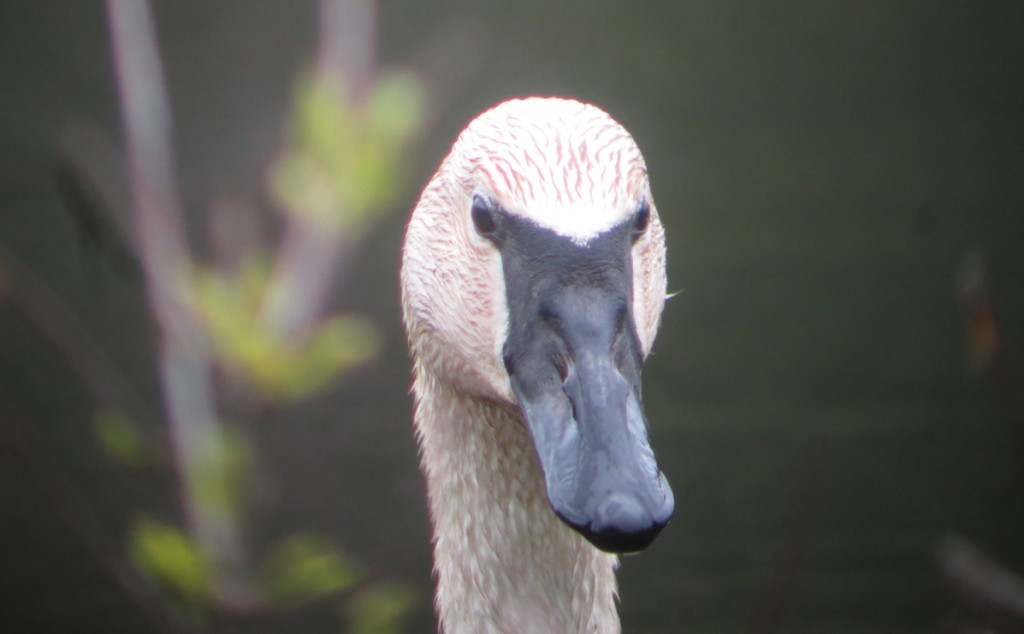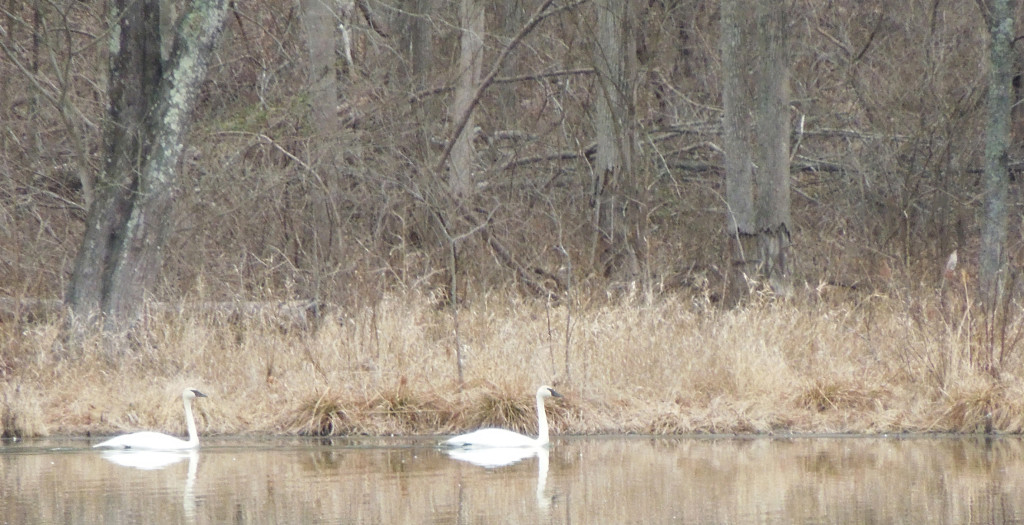by Sara Richmond
Not long ago, a trumpeter swan sighting was nearly unheard of in the Chesapeake Bay region—or many places in the United States, for that matter. After being hunted to near-extinction in the early 1900s, the birds, who can boast an 8-foot wingspan and are the largest waterfowl in the world, struggled to recover. Now the swans are starting to reappear, including two spotted recently at the Smithsonian Environmental Research Center (SERC).

Unlike tundra swans, the other native swans in the Chesapeake, trumpeter swans have a small triangle of feathers above their beak. (Tyler Bell)
Scientists first found the pair of juvenile swans last year at a pond on SERC’s campus, occasionally joined by one or two others. Initially, SERC staff were uncertain if the swans were trumpeter swans. Three main swan species live in the United States—trumpeter, tundra, and mute—and trumpeter and tundra swans can look similar.
“If you find a white swan in the summer, it’s likely a trumpeter,” says Tyler Bell, a SERC scientist who has encountered the swans on several occasions. In the winter when tundra swans migrate to the Chesapeake, identification gets trickier. Bell first spotted SERC’s visiting trumpeter swans last year while doing field work and attempted to take a photograph, but the zoom on his camera was inadequate for capturing a key identifying characteristic: “The shape of the feathering at the top of the bill. In tundra swans, this is rounded. In trumpeter swans, it is sharply pointed,” he explains. After further sightings, SERC staff were able to confirm that the two new visitors were indeed trumpeters.
The third type of swan found in the United States, the mute swan, is an invasive species. Mute swans are easy to identify because they have orange beaks, while trumpeter and tundra swans have black beaks. Mute swans were brought from Europe over a century ago to serve ornamental purposes in parks and estates. Eventually, the swans were released or escaped, and their numbers grew. Today, you can sometimes find them in the Chesapeake Bay region and many other places across the country. Mute swans have a reputation for being hearty eaters, consuming aquatic grasses that also serve as habitats for fish, crabs, and other small marine life.

Two trumpeter swans paddle through a SERC pond in February 2017. (Kristen Minogue/SERC)
This winter, two trumpeter swans appeared on SERC’s pond again. The staff suspect they’re the same young pair from the previous year, as they still have gray feathers on their necks that will turn white as they mature.
If the appearance of two swans doesn’t sound like a big deal, consider that in the early 1930s, fewer than 70 trumpeter swans were thought to exist worldwide. Most of those lived in an area near Yellowstone National Park.
Several changes could be behind the trumpeter swan’s gradual comeback. The Migratory Bird Treaty Act of 1918 has helped protect the bird over the last century. Reintroductions by wildlife organizations have given them a further boost. And although the trumpeter swan has never appeared on the federal endangered species list, several states have taken steps to protect it.
SERC staff continue to keep their eyes peeled for the swans. Recently, trumpeter swan sightings have been reported in other locations nearby. If you see a swan this winter, especially in the Chesapeake Bay region, be sure to take a closer look!

